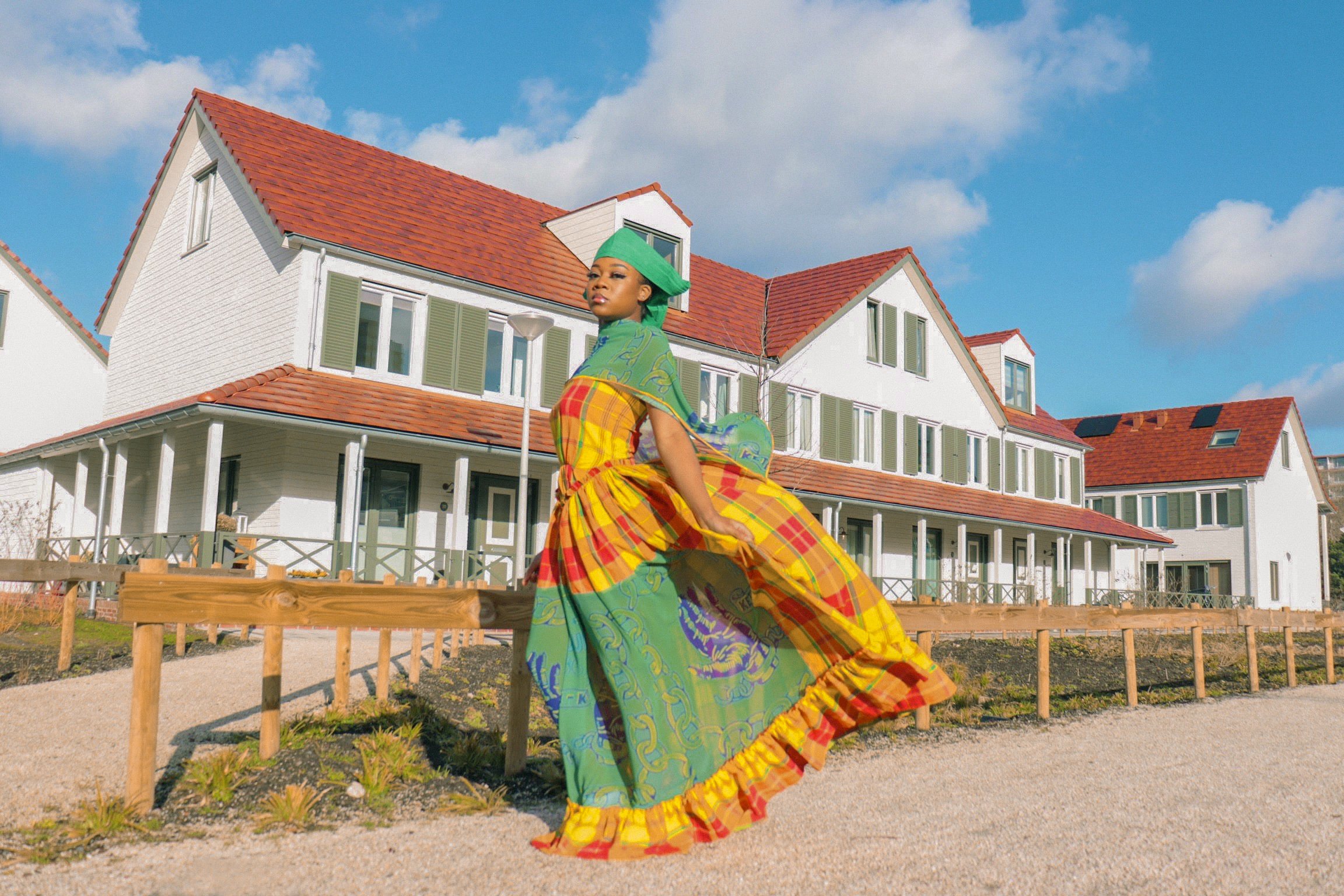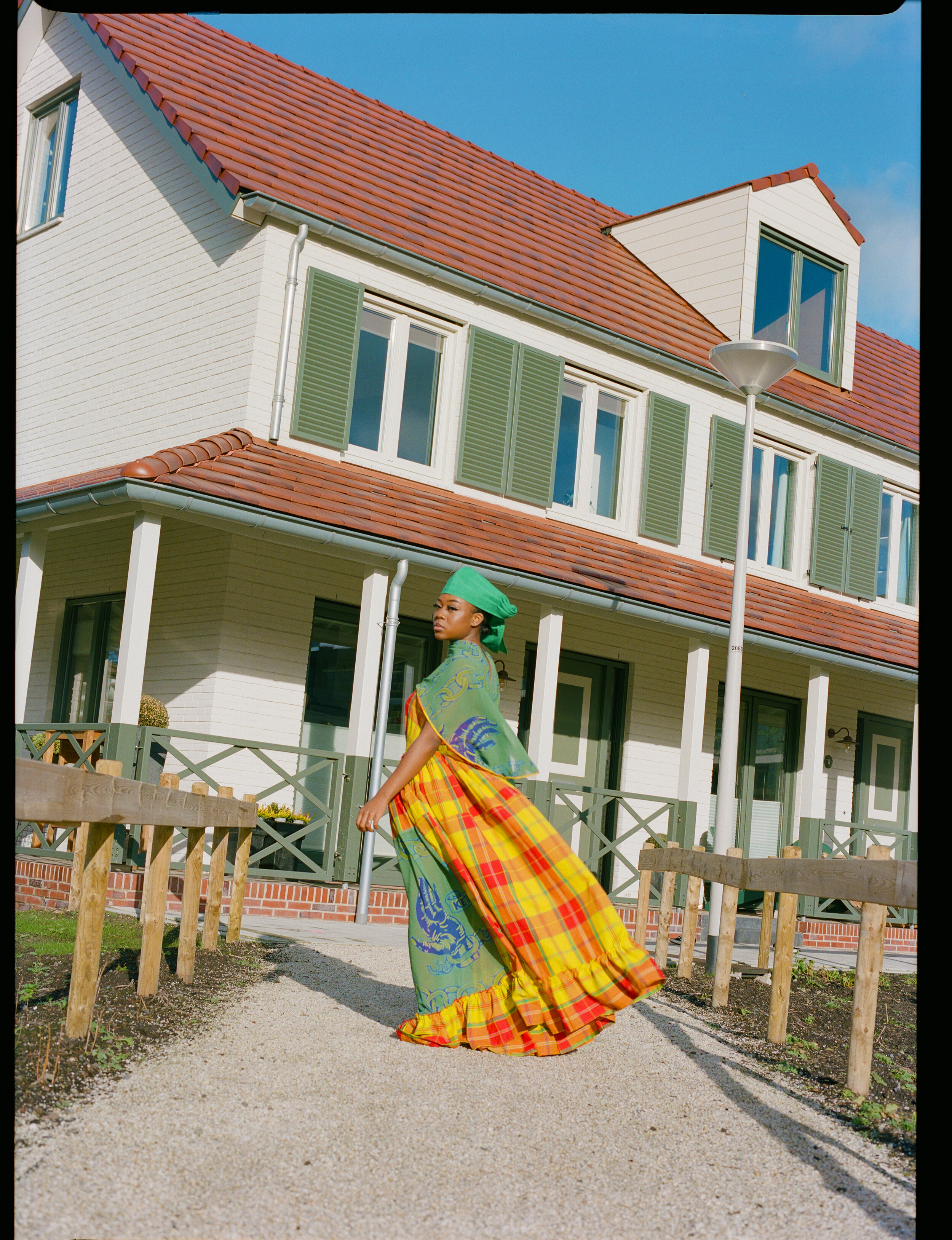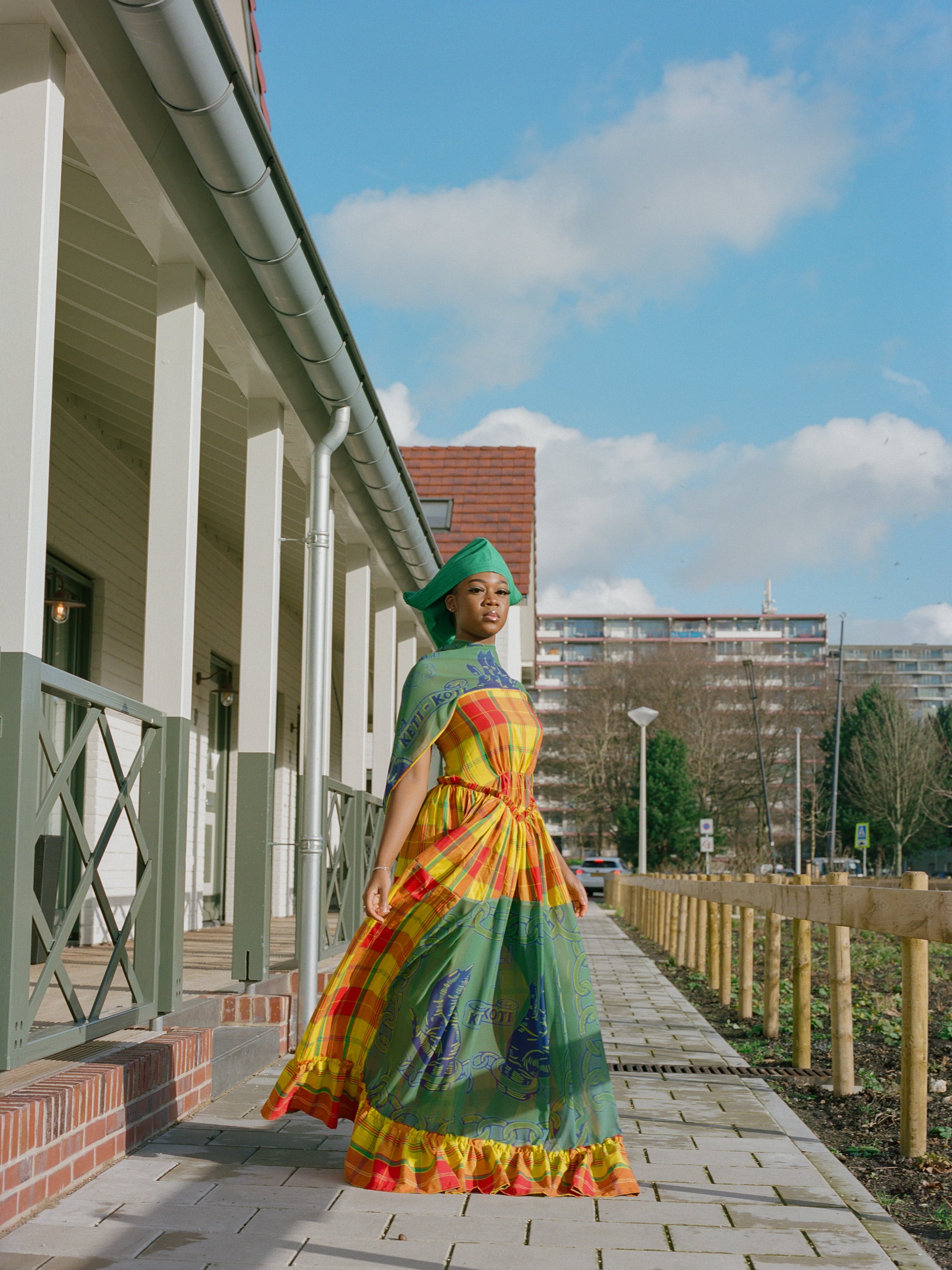Follow Me & My Train of Thoughts Mi Oso (My House) | Colonial Tropes in the 21st Century
Follow Me & My Train of Thoughts | Mi Oso (My House) Colonial Tropes in the 21st Century | 2021
Produced during ST4YNY4L4NE | Artist-in-Residence program | Amsterdam, Netherlands | 2021
Follow Me & My Train of Thoughts: Mi Oso –
Colonial Tropes in the 21st Century
As an ex-pat in the Bijlmer / Amsterdam southeast, my insider/outsider disposition allows me to see Mi Oso (My House) for what it is, a colonial housing complex in the predominantly Black neighborhood of Amsterdam. Completed in the Spring of 2020, Mi Oso is an architectural project that draws inspiration from Surinamese architecture. However, these style of houses is customary within countries with colonized histories. Similar structures like the colonial houses of Mi Oso in the Bijlmer / Amsterdam southeast linger throughout the Caribbean as ghosts that persistently remind the descendants of enslaved Africans of a troubled past in the present. Follow Me & My Train of Thoughts: Mi Oso – Colonial Tropes in the 21st Century looks at architectural memory and how colonial legacies continue to permeate our quotidian life centuries later through photography and video documentation accompanied by an academic paper analyzing the satire of Mi Oso during a time were gentrification has substituted colonization practices, displacing marginalized communities already living in uncertainties.
In Follow Me & My Train of Thoughts: Mi Oso – Colonial Tropes in the 21st Century, the model wears an angisa, a headwrap typically worn by Afro-Surinamese women. The angisa is part of the traditional Afro-Surinamese attire known as Koto. The angisa is starched and folded, secure with pins allowing the individual to wear it like a hat. During slavery, the angisa conveyed hidden messages amongst the enslaved Africans. This particular angisa is named Follow Me because of how the end trails behind the wearer. In this project, the subject invites viewers to “follow me and my critical thought process of Mi Oso.” The dress alludes to the Pangi, the checkered fabrics commonly used in the Koto. However, this pattern is more common in Saint Lucia, where this fabric style is known as madras. The shawl and bottom half of the skirt draw inspiration from the Keti-Koti (the chain is cut) flag design. Here the flag is redesigned in green and blue hues in this custom configuration and enlarged to emphasize 1863. Keti-Koti celebrates July 1st, 1863, which marks Emancipation Day in Suriname. However, numerous Afro-Surinamese today highlight 1873 instead of 1863. Enslaved people in Suriname did not have complete autonomy until 1873 due to a ten-year mandatory transition period. In those ten years, enslaved Africans forcefully labored on the plantations with minimal pay. Anyone that resisted the new order could face jail time.
Together these symbolic references shed light on the tense history between the Netherlands and the former Dutch colony Suriname. It highlights the intricacy of the overpriced colonial housing complex in the Bijlmer / Amsterdam southeast. Lastly, it illustrates why Mi Oso does not empower these disenfranchised communities. It is a surface-level method of acknowledging while simultaneously erasing the Black population in the Bijlmer.



